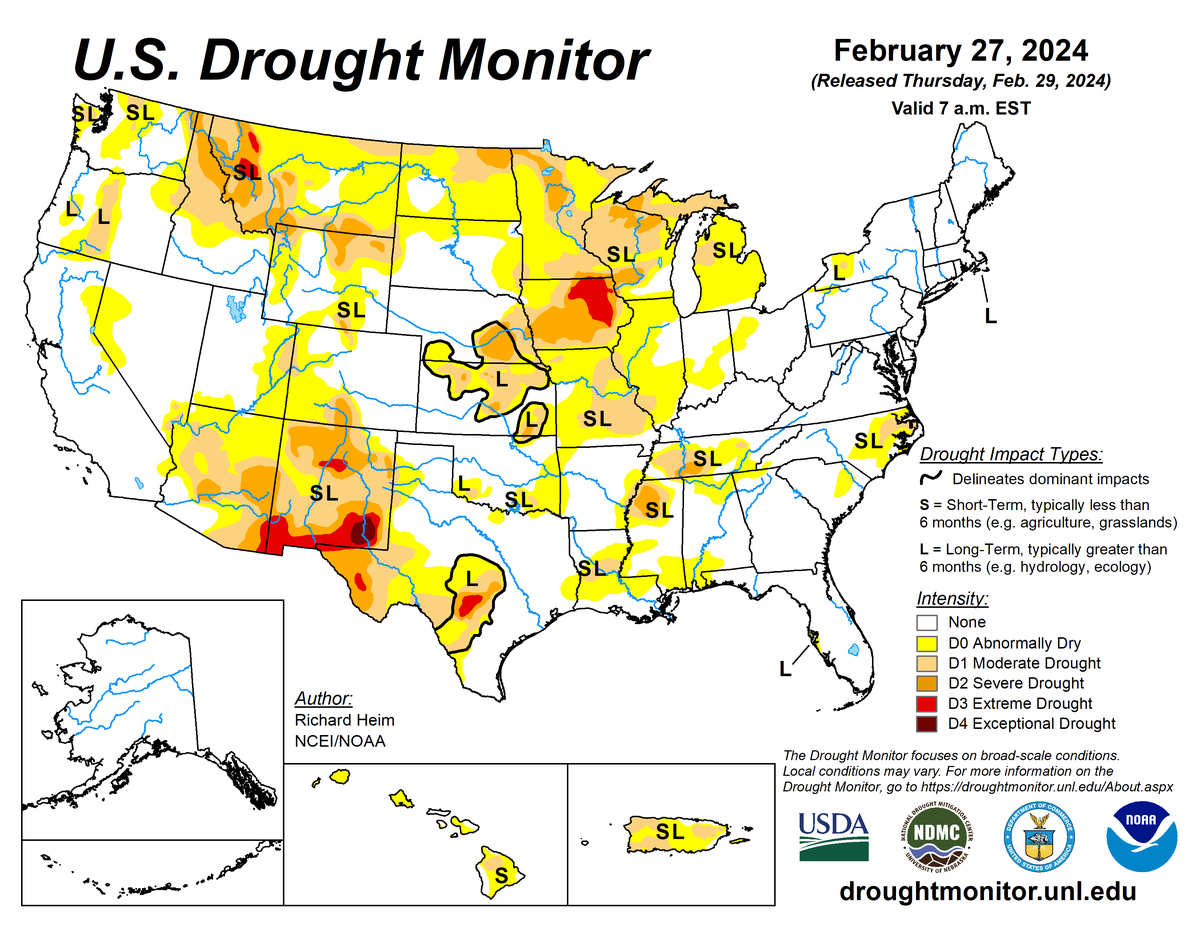
According to the February 27, 2024 U.S. Drought Monitor (USDM), moderate to exceptional drought covers 18.1% of the United States including Puerto Rico, an increase from last week’s 16.6%. The worst drought categories (extreme to exceptional drought) increased slightly from 1.2% last week to 1.3%.
Several weather systems moved across the contiguous U.S. (CONUS) during this U.S. Drought Monitor (USDM) week (February 21–27). Their fronts and surface lows spread rain and snow across parts of the West at the beginning and end of the week, and over the Tennessee to Ohio Valleys and Appalachians at mid-week. These systems were associated with an upper-level circulation pattern that consisted of low-pressure troughs just off the west and east coasts, with a high-pressure ridge over the central part of the country.
The ridge brought above-normal temperatures to much of the contiguous U.S. from the Rocky Mountains to the Appalachian Mountains with weekly temperatures averaging 15–20 degrees above normal from Texas to the northern Plains and Upper Mississippi Valley. Temperatures averaged near to cooler than normal in parts of the interior West to Pacific Coast and along the Eastern Seaboard. The ridge inhibited precipitation from the Rockies to the Mississippi Valley, where little to no precipitation fell.
Precipitation in the West was mainly over mountain ranges, but the amount was not enough to improve drought conditions. Lower elevations were generally drier than normal. Precipitation in the Midwest was enough to prevent further drought expansion or intensification where it was wetter than normal for the week, but the Great Lakes, as well as the Southeast and much of the Northeast, were drier than normal.
Drought or abnormal dryness expanded or intensified in parts of the Plains and Midwest, and a few parts of the Pacific Northwest, Gulf of Mexico coast, and Mid-Atlantic coast. Only a couple of spots along the Gulf of Mexico coast had contraction of drought or abnormal dryness. Nationally, expansion far exceeded contraction, so the nationwide moderate-to-exceptional drought area increased this week.
Abnormal dryness and drought are currently affecting over 83 million people across the United States including Puerto Rico—about 26.9% of the population.

The full U.S. Drought Monitor weekly update is available from Drought.gov.
In addition to Drought.gov, you can find further information on the current drought as well as on this week’s Drought Monitor update at the National Drought Mitigation Center
The most recent U.S. Drought Outlook is available from NOAA’s Climate Prediction Center and the U.S. Department of Agriculture provides information about the drought’s influence on crops and livestock
For additional drought information, follow #DroughtMonitor on Facebook and Twitter.



